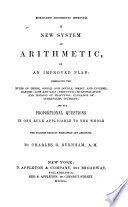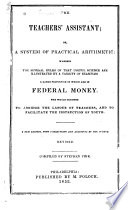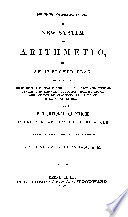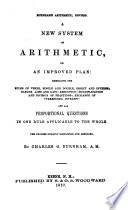 | Charles Guilford Burnham - 1850 - 350 pages
...before. Therefore, Art. 237. — When the first term, the number of terms, and common difference are given, to find the last term : RULE. Multiply the...difference, and to the product add the first term, and the sum will be the last term. 2. If the first term of a series be 5, the number of terms 35, and... | |
 | Charles Haynes Haswell - Engineering - 1851 - 346 pages
...Number of Terms are given, to find the Last Term. RULE. — Multiply the number of terms less one, by the common difference, and to the product add the first term. EXAMPLE. — A man travelled for 12 days, going 3 miles the first day, 8 the second, and so on; how... | |
 | Arithmetic - 1852 - 202 pages
...common difference, and number of terms given, to find the last term, and sum of all the terms, RULE. 1. Multiply the number of terms, less 1, by the common...difference, and to the product add the first term, the sum is the last term. 2. Multiply the sum of the two extremes by the number of terms, and half... | |
 | Benjamin Greenleaf - Algebra - 1852 - 348 pages
...terms given to find the last term, we have the following RULE. Multiply the number of terms, less one, by the common difference, and to the product add the first term. Again, if we invert the terms, we have (1) (2) (3) (4) (5) (6) (7) 20, 17, 14, 11, 8, 5, 2. Here we... | |
 | Samuel Alsop - Algebra - 1856 - 152 pages
...Therefore, to find any term of the series, Subtract one from the number of the term, multiply the remainder by the common difference, and to the product add the first term. EXAMPLES. Ex. 1. Find the 20th term of the series 3,8, 13, &c.? Here the common difference is 5 ; I... | |
 | Charles Guilford Burnham - Arithmetic - 1857 - 328 pages
...before. Therefore, Art* 287 »- — When the first term, the number of terms, and common difference are given, to find the last term : RULE. Multiply the...difference, and to the -product add the first term, and the sum ivill be the last term. 2. If the first term of a series be 5, the number of terms 35?... | |
 | Charles Guilford Burnham - 1857 - 342 pages
...before. Therefore, Arti 237 • — When the first term, the number of terms, and common difference are given, to find the last term : RULE. Multiply the...difference, and to the product add the first term, and the sum will be the last term. 2. If the first term of a series be 5, the number of terms 35»... | |
 | Benjamin Greenleaf - Arithmetic - 1860 - 358 pages
...added to the first term, must give the last term ; thus, 2 -J- 27 = 29. Hence the following Ri'LE. — Multiply the number of terms less 1 by the common difference, and add this product to the first term for the last term. NOTE. — If the series is descending, the product... | |
 | Thomas Tucker Smiley - 1868 - 238 pages
...difference, and number of terme, being given, to find the last term, and sum of all the terms. Rule. 1. Multiply the number of terms, less 1, by the common difference, and to that product add the first term ; the sum is the last term. 2. Add the first and last terms together,... | |
 | Nehemiah Hawkins - Steam engineering - 1898 - 230 pages
...difference, and the number of terms, to find the last term. Rule. — Multiply the number of terms, less one, by the common difference, and to the product add the first term. Example. — What is the 20th term of the arithmetical progression, whose first term is 1, the common... | |
| |